GOLD ISN’T JUST BEAUTIFUL AND RARE. It is also durable. No historian can document every detail of history, but burial objects in gold often tell a story better than other records.
Thanks to the generous donation from the owners of Mengdiexuan (夢蝶軒), Betty Lo(盧茵茵) and Kenneth Chu (朱偉基), the public has the opportunity to remember the long history of golden jewellery and artefacts at the Hong Kong Palace Museum, West Kowloon Cultural District.
Behind the golden jewelry that still shines after thousands of years underground, people can find the answer for why Chinese people are fond of gold, and how the golden artefacts portray the real visage of ethnic fusion in Chinese history.
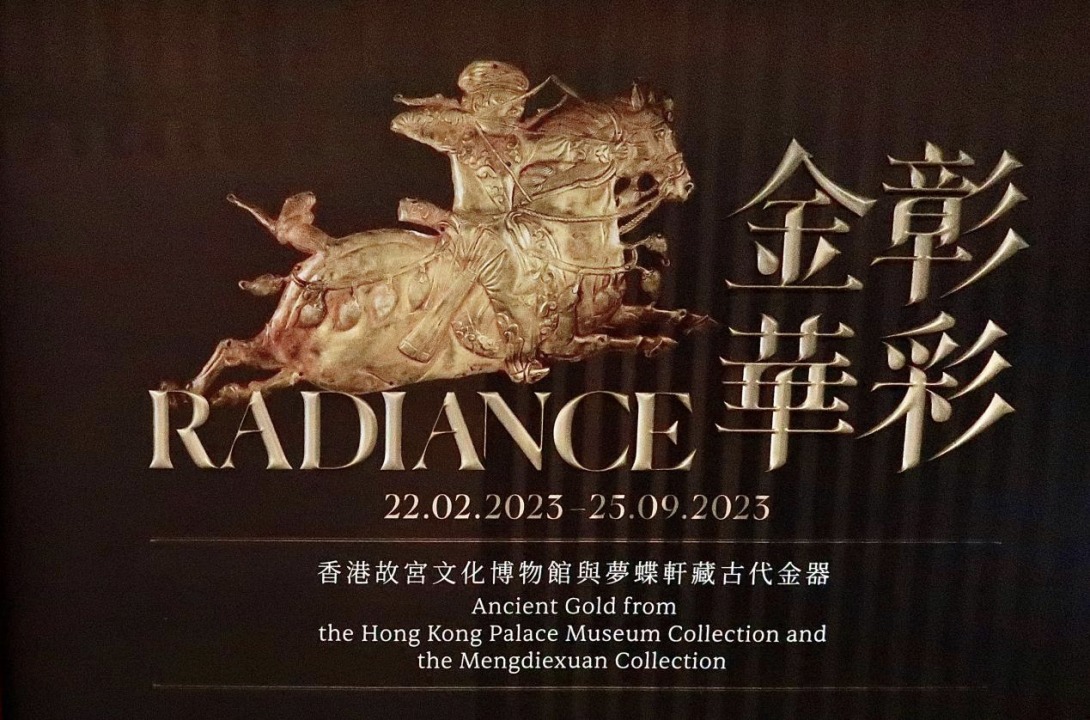
The poster of the exhibition (above) shows a piece titled “Plaque with mounted archer”, which can be traced back to the royal hunting scene on gold and silver artefacts of the Sasanian Empire (224-651) in Central and Western Asia.
When I entered Gallery 9 of the museum, the setting of the exhibition reminded me of a Northern Dynasties (北朝) folk song I learnt in primary school:
“The sky is like a shepherd’s tent, Covering the whole earth.” (“天似穹廬,籠蓋四野”)
The tent-shaped booths are hollowed out by orange-coloured motifs, which tells me that the objects have a close relationship with steppe communities, including the northern and western regions of ancient China, as well as part of Central Asia.

My intuition was right.
From time immemorial, bronze ritual vessels and jades were favorites of the elite of the Central Plains in early China. But those in the steppe stretching from northern China to southern Siberia had different choices. They chose gold ornaments with animal motifs as symbols to indicate their identities.
However, after periods of political, economic and demographic change in the Zhou (周朝, c. 1100-771 BC), Qin (秦朝,221-207 BC) and Han (漢朝,206 BC-220 BC) dynasties, the elite of the Central Plains seem to have begun to use gold more elaborately in their daily lives and rituals.
There is no doubt that the Han and the Xiongnu (匈奴), the Tang (唐朝) and the Tubo (吐蕃), were military enemies. But aesthetically, the two sides were constantly learning from each other, which in some ways contributed to China’s great national integration.
HAN AND XIONGNU
These ornaments with raised studs (above) were used as personal or harness ornaments by the elite associated with the Dian culture (4th century BCE-1st century CE).
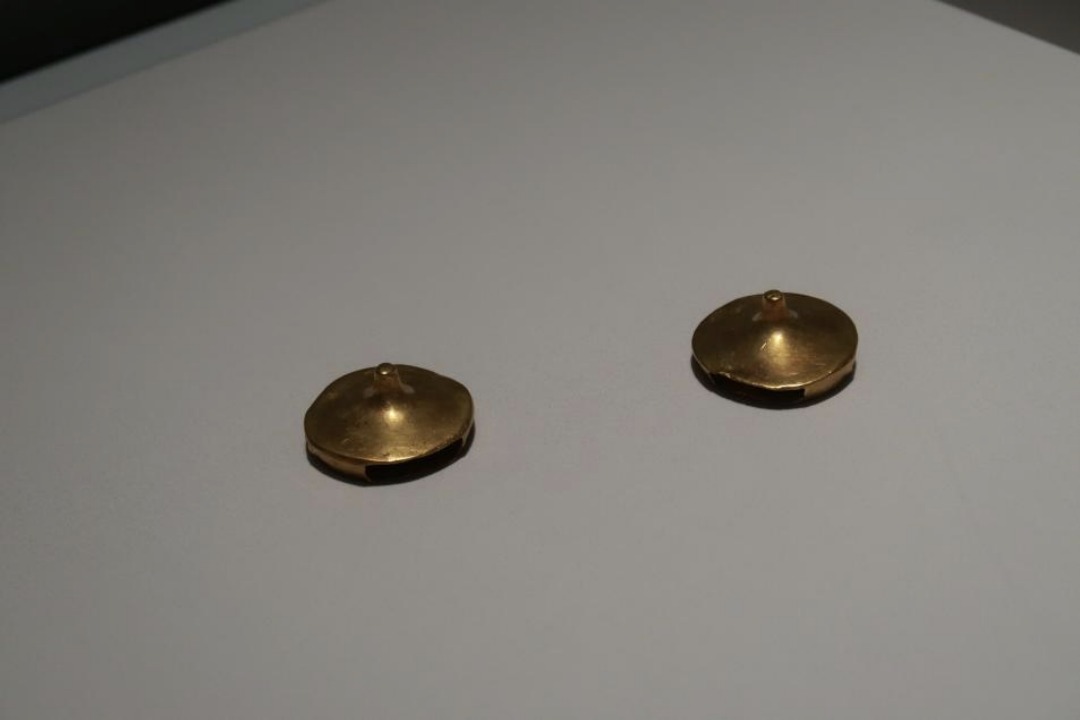
Similar ornaments have been found in the cemetery at Shizhaishan, Yunnan province(雲南石寨山墓地), alongside a seal bestowed by Emperor Wu (r. 140-87 BCE) of the Western Han Dynasty (206BCE-8CE) to a regional king. It is generally believed that gold-working techniques were introduced to Yunnan from the steppe or from India through the Silk Roads.

This headdress (above) may have belonged to a member of the Xiongnu elite. It is finely decorated with animal motifs in repousse, and the roundel at the top depicts a battle scene between four tigers and deer. The hole in the centre suggests that a finial may once have been attached to the top—possibly in the shape of a three-dimensional imaginary bird or animal, such as those found in southern Siberia, the Inner Mongolia Autonomous Region and Shaanxi Province (陝西省). The finials were usually made of soft skins or moveable parts. This allowed for a more realistic depiction of animals fighting when the wearer moved.
TANG AND TUBO
At the beginning of the 7th century, roughly contemporary with the Tang Dynasty (618-907), the powerful Tubo Kingdom (7th-9th century) emerged in the Qinghai-Tibet Plateau area. Taking advantage of the convenient transport network provided by routes such as the Silk Roads, the Tubo adopted multicultural factors from the Central Plains, South Asia, and Central and Western Asia. The cross-fertilisation of these different cultures led the Tubo to develop its characteristic gold ornaments.
Horses were essential to the Tubo as a means of transport and played an important role in mounted warfare. Horse sacrifice was an important part of elite Tubo burials.
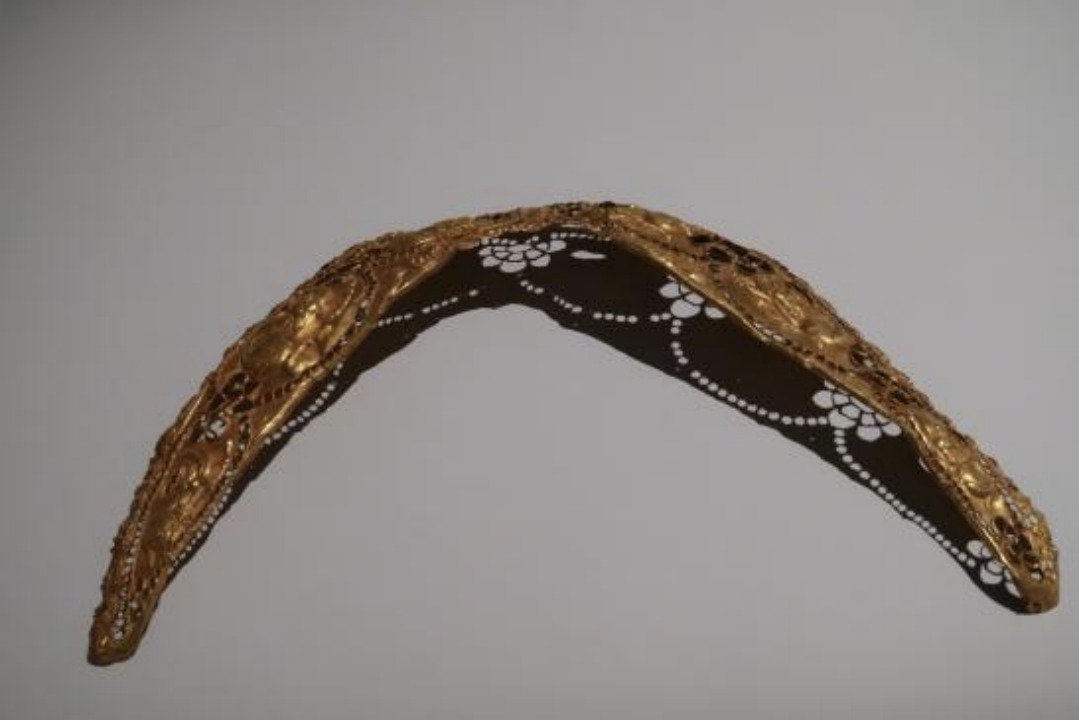
These groups of saddle ornaments (above) depict winged lions or unicorns in repousse. The winged animal motif originated in Western Asia, and Tubo goldsmiths developed an innovative decorative style that combined the winged animal motif with turquoise inlay.
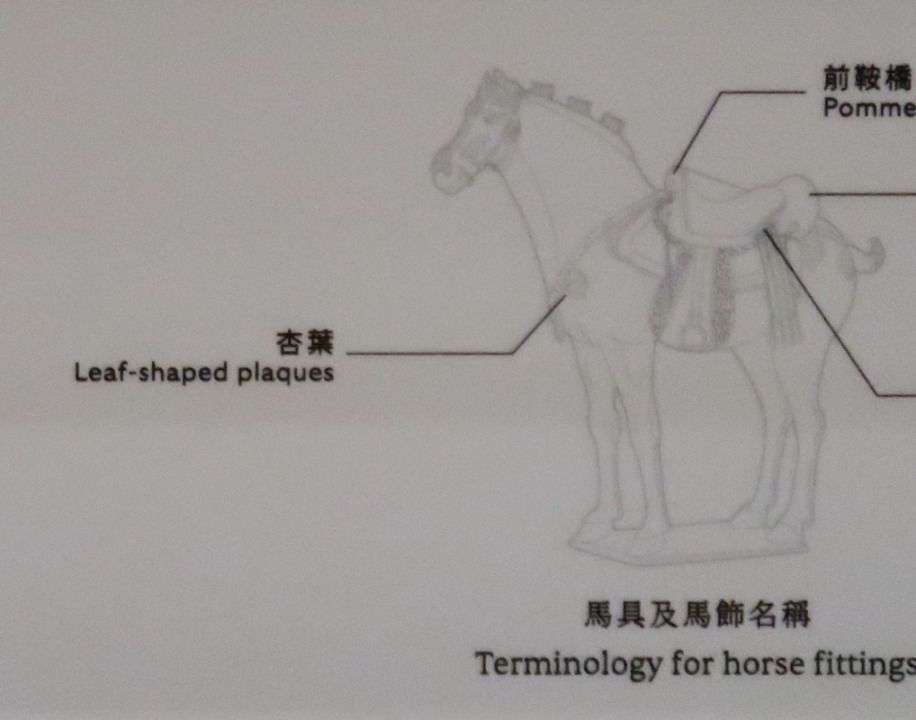
The Silk Roads also provided the Tang Empire with opportunities to assimilate foreign cultures, and this cultural exchange is reflected in the designs of Tang gold and silver. Gold played an important role in the complex relationship between these two regimes during their three hundred years of coexistence. It is recorded that gold objects were among the gifts from Tubo to Tang, and Tang gold pieces were also imported into Tubo through marriage alliances.
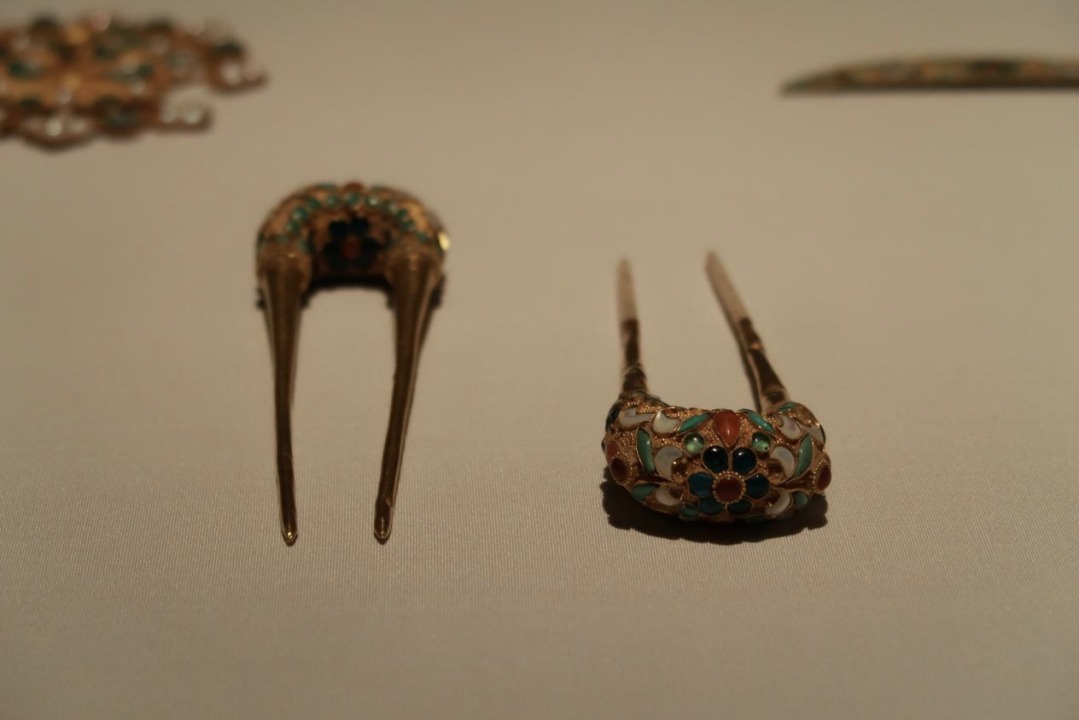
(As only the top of the comb would be visible on the coiffure, it became the focus of the decoration. Tang comb tops are often elaborately embellished with an openwork or repousse design. The most common patterns are paired birds or butterflies with flowers.)
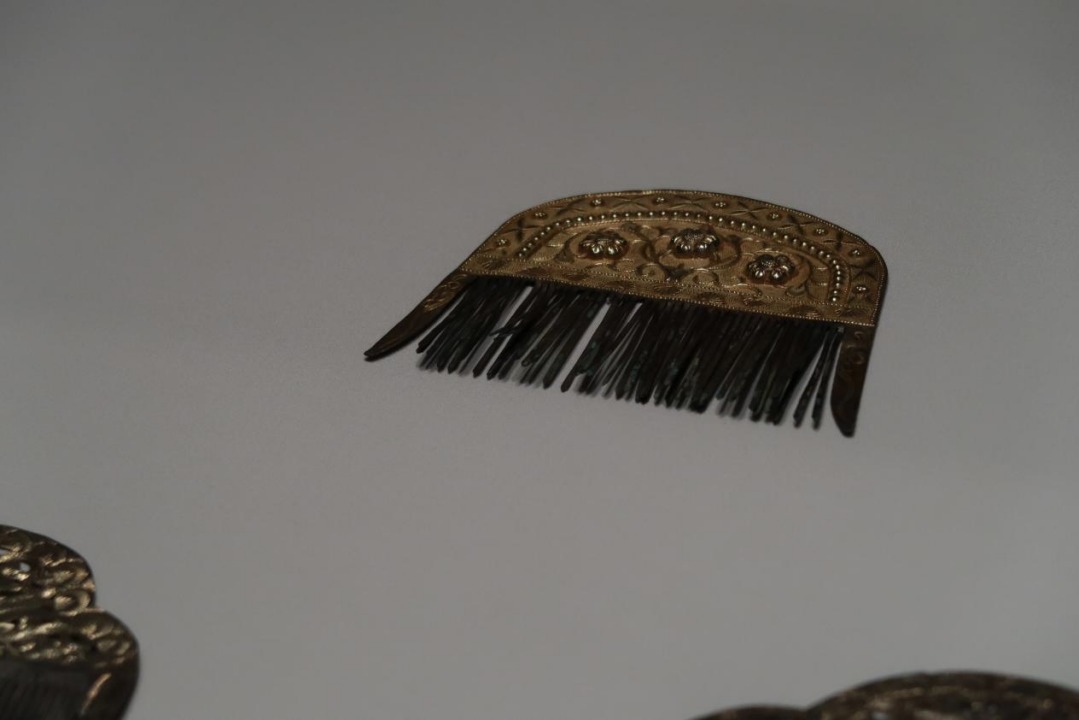
The golden artefacts are the paintbrushes of history. It is difficult to introduce all 946 gold and silver objects donated by Mengdiexuan in this article. But they deserve to be appreciated in person. I believe you will be as impressed as I was by the original intention of Betty Lo’s 30-year collecting career:
“A person’s life is finite. And it is a responsibility to take good care of antiques that have lasted for thousands of years. Because the period of collecting is temporary for them. “
Image at the top from the Hong Kong Palace Museum.

